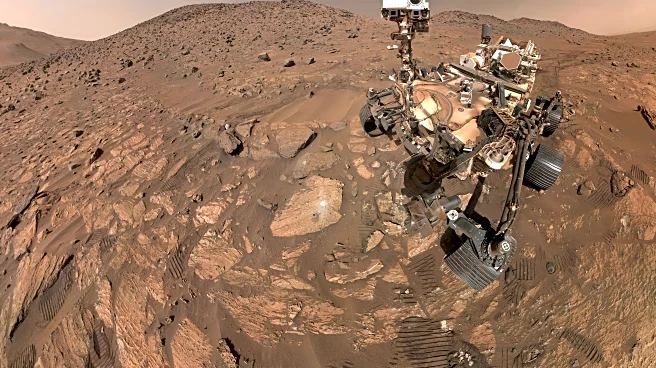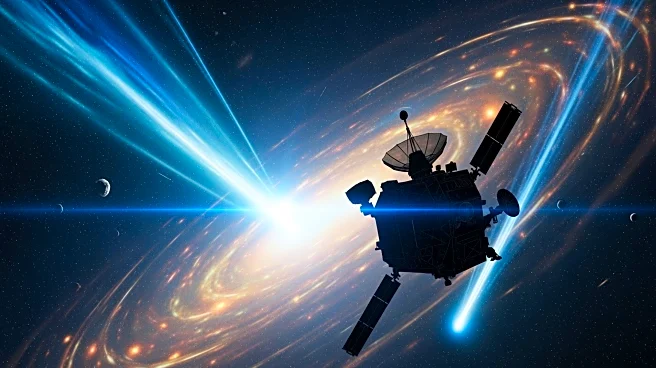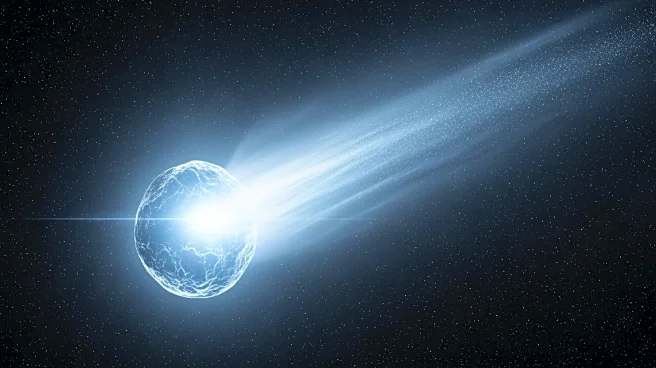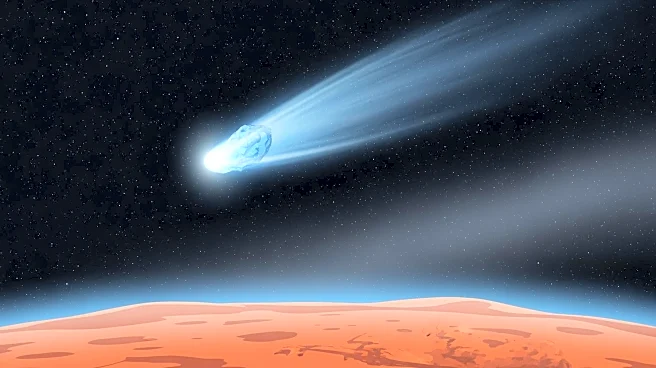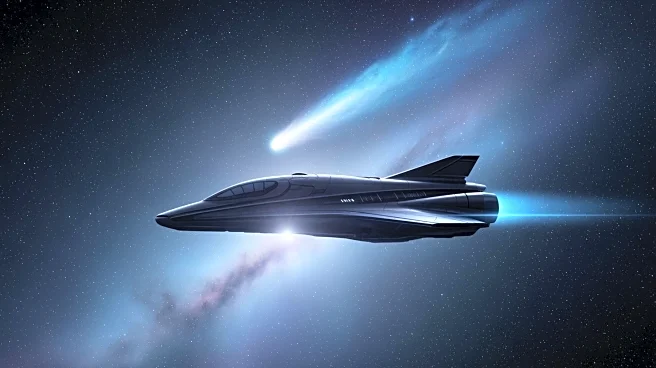What's Happening?
NASA's Mars Reconnaissance Orbiter (MRO) has revisited a mysterious feature beneath the ice at Mars' south pole, previously suspected to be an underground lake. Using an innovative radar technique, researchers
now suggest the feature is more likely a layer of rock and dust. The 2018 discovery of the suspected lake had sparked significant scientific interest due to the potential presence of water, which is closely linked to life. The new findings, published in Geophysical Research Letters, indicate that the radar technique could be used to explore subsurface resources elsewhere on Mars, aiding future exploration. The observations were made possible by a special maneuver that rolls the spacecraft 120 degrees, enhancing the radar's ability to penetrate deeper underground.
Why It's Important?
The findings from NASA's MRO have significant implications for future Mars exploration. The ability to accurately identify subsurface materials is crucial for determining potential resources that could support human missions. The radar technique used by MRO could be applied to other regions of Mars, potentially identifying water resources near the equator, which is more suitable for human habitation due to its warmer climate. This advancement in radar technology enhances our understanding of Mars' geology and could inform the selection of landing sites for future missions, impacting the planning and execution of human exploration on the Red Planet.
What's Next?
NASA scientists are eager to apply the radar technique to other areas of interest on Mars, such as Medusae Fossae, a geologic formation that may contain ice. The ability to detect subsurface ice could provide valuable information for future missions, particularly those involving human exploration. The continued use of this technique will help refine our understanding of Mars' subsurface composition and guide the search for resources essential for long-term human presence on the planet.
Beyond the Headlines
The debate over the presence of liquid water beneath Mars' south pole highlights the complexities of planetary science and the challenges of interpreting radar data. The initial hypothesis of a briny lake spurred creative scientific inquiry, demonstrating the dynamic nature of space exploration. As technology advances, scientists can revisit previous findings with new tools, potentially overturning earlier conclusions and advancing our knowledge of planetary environments.




